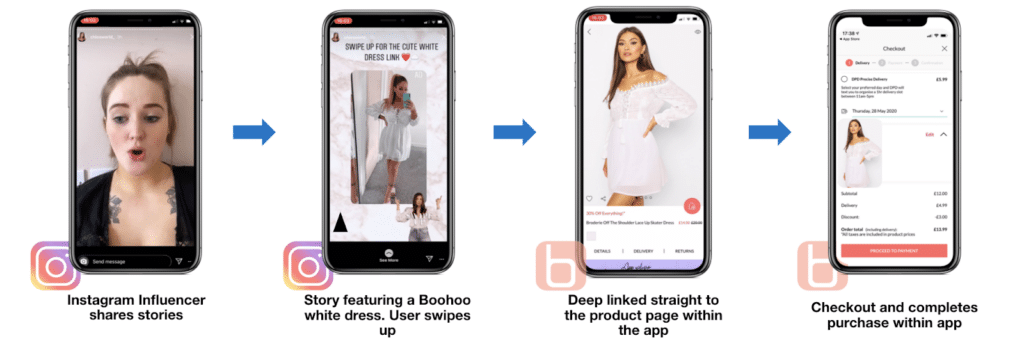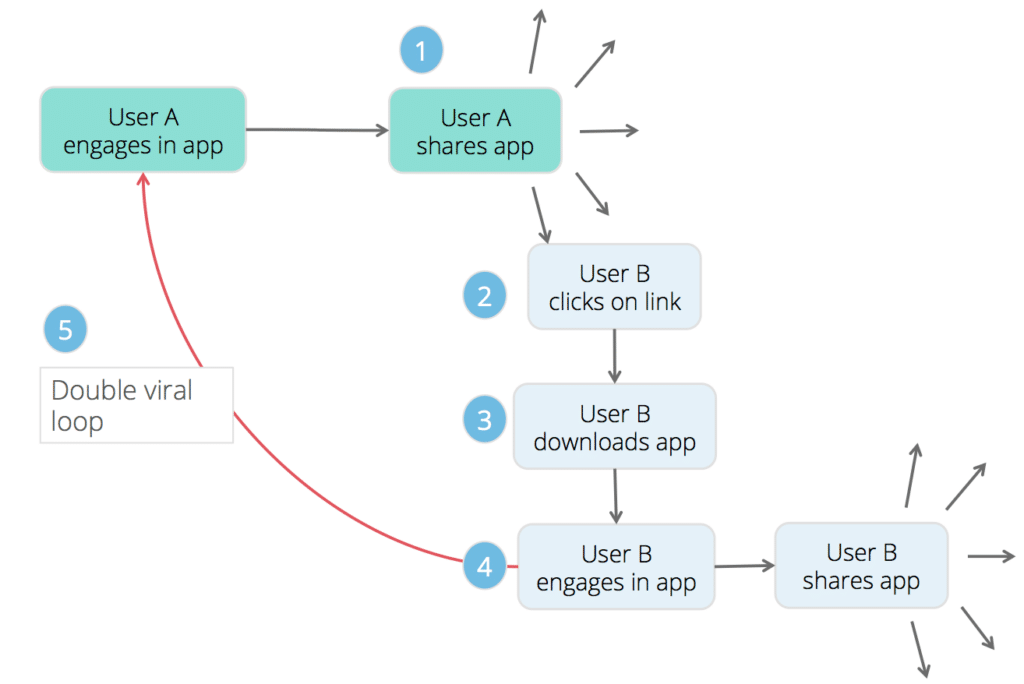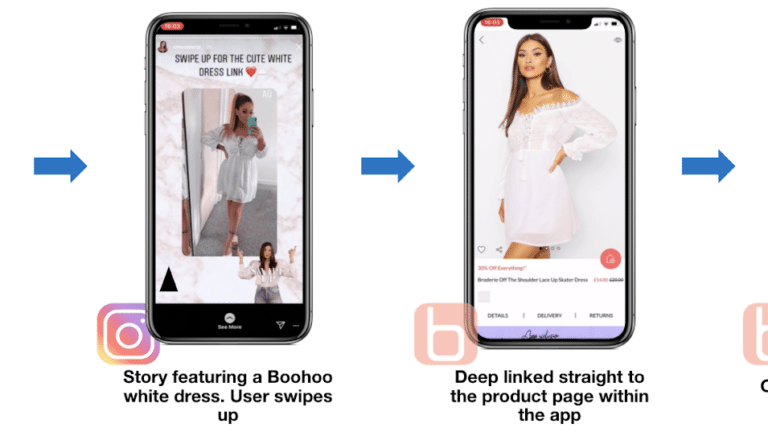Would you trust a review or promotion from your favorite YouTube vlogger, Instagrammer, or Twitch streamer to recommend products and services to you rather than ads?
Turns out, a huge segment of the market would: 91% of consumers aged 18-34 trust online reviews as much as friends and family. Getting an influencer to use, review, and promote your app clearly has huge potential to build trust among consumers that will eventually lead to conversion. It’s no wonder influencer marketing is projected to become a $15 billion market by 2022, and with good reason.
An influencer is defined as a person with a following and audience who promotes your brand in order for you to achieve your business goals. Brands leverage these individuals to advertise on their behalf to reach a wider audience in hopes to grow their brand.
To run a successful influencer marketing campaign, it’s important to understand how to measure its success. Here’s how to set up and measure your influencer marketing campaigns in order to reach your goals:
1. Define Your Campaign Goals and KPIs
The objective of influencer marketing can be different depending on what you actually want to gain out of the partnership. Think about what your goals are: is it simply extending your reach and making potential customers aware of your app, or is it to increase revenue by a certain percentage? Different goals will have different KPIs, and it’s important to make those goals and metrics clear to the influencer so you’re all on the same page. Here are some common goals and their corresponding KPIs to help you measure the influencer’s impact on your goals:
Increase Awareness: Make Potential Customers Know You Exist
Many brands utilize influencer marketing as a means to amplify their voice and visibility to potential customers, which means their goal is to increase overall awareness. Some KPIs you could use to measure this goal are views/impressions on what you want users to look at (whether that be a landing page, product page, an ad, video, blog, or a social media post), clicks on those corresponding pieces of content, search volume data, and an increase in site or app traffic.
Increase Engagement: Make Prospects Interact with You
Being aware of a brand doesn’t necessarily mean that users will engage with you afterwards. For example, if you run a campaign that drives a 20% increase in views for your brand’s Instagram page, but none of those users follow your profile or interact with your posts, the campaign would be successful from an awareness standpoint but not an engagement standpoint. Awareness is a great first step to building virality, but shouldn’t stop there.
Eventually, you want those who are aware of your brand/app to become users and fans of it. Engagement can be measured by multiple metrics and can be different across platforms, for example: new followers gained, video plays, clicks, shares, mentions, votes, and subscriber count. There’s also click-through-rate, which tells you a percentage of those from the influencer’s audience who saw a post about your brand actually clicked on a link that led back to your own brand’s website, product, app etc. To track engagement, you could utilize your social media platform’s analytics tools, or even better, use deep linked referrals that bring users from an influencer’s post right into your own app, which would tell you exactly how the user got there and give credit to the influencer.
Increase Conversions: Make Prospects into Customers/Users
Maybe you want to drive X number of app installs or increase sales by X%. To track conversion metrics, you’d want to measure activities like in-app or web purchases as a result of an influencer link, or app installs that occur as a result of clicking an influencer link.
To measure the impact the influencer made on app installs and sales, and to automatically attribute credit to your influencer, your influencers should use deep links. Deep links will lead the user directly to where you want them to go, whether that be the app homepage or a specific product. This technique ensures that the user experience is seamless, reducing the likelihood of drop off and increasing the likelihood of users to complete the action you want them to, whether that be to install or purchase. Additionally, deep linking allows you to easily track sales or app installs that occur from the unique link your influencer shares, and you can even set up custom UTM parameters according to your campaign.
Consider the example below:

In this example, an Instagram influencer shares a dress from Boohoo, an online clothing store, on her story. The user swipes up for the link to the product, and a Branch-powered deep link brings them directly to the dress within the app, allowing them to easily checkout and complete their purchase. The link tracks users who visit and purchase from this link and attributes credit to the influencer, allowing the brand to directly measure the impact her promotion had on sales.
2. Understand and play to your audience
Different influencer marketing strategies — as well which influencer you use — will either flop or flourish depending on your audience. Various platforms and social media channels will resonate with certain audiences differently, and it’s important to play your cards right. For example, the video app TikTok is most popular amongst younger millennials and Gen Z, and commonly features short-form content such as lip-syncing, dance challenges, and short skits. Meanwhile, product reviews and how-to tutorials are among the most popular types of videos on YouTube, showing that audiences use YouTube as a means of learning and education, not just for entertainment.
Your audience will determine what type of content you and the influencer agree to create. It’s important to discover what type of content your audience will be more receptive to, whether that be a longer-style video such as a vlog or product demo, a hashtag challenge on TikTok, an Instagram story, or more.
Equally important is to pick an influencer with a similar audience to your target audience. This is crucial because an influencer’s followers can easily deduce when an influencer is posting just for the money and doesn’t actually believe in the brand — and followers aren’t afraid to call out this deception. Ensure your influencer’s values are aligned with your brand’s and that their own personal brand is well-matched to your own. It’s important to choose influencers that align with the message and mission of your brand so they can be genuine, rather than someone who has to mold themselves to fit your brand and appear inauthentic as a result.
3. Find your influencer
There are different ways to go about finding influencers:
- Using an influencer marketplace tool like Tagger Media, Izea, Upfluence, etc
- Using your chosen platform’s marketplace for influencers, if applicable (i.e. TikTok creator hub)
- Going through hashtags and content on the platform of your choice to see who organically posts about your brand
- Manually searching for keywords on your platform of choice
It may seem surprising, but the more subscribers or followers someone has doesn’t always necessarily mean you’ll get more app downloads or make more sales. In fact, this study about the effectiveness of YouTube influencers on driving app downloads showed that there was no correlation between downloads and a YouTuber’s number of subscribers or the number of views per video! Instead of focusing purely on an influencer’s follower count, also look at how relevant your content/strategy is to your target audience and how much the influencer engages with their audience. Make sure that they post authentic content that resonates with their brand, and guage their level of engagement with their audience. Do they respond to comments? Post engaging content like polls or questions? You want an influencer with a decent reputation and a track record of good engagement.
4. Set up deep-linked referrals to track and attribute influencer activity
Spending on an influencer campaign without measuring or understanding campaign performance is like throwing money into the dark, which is why it’s important to track downloads or in-app purchases that come from different influencer links. Alarmingly, marketers have traditionally struggled to measure influencer performance: 78% of companies indicate measuring and improving ROI is a primary concern working with influencers. Don’t let this be you!
To measure performance and ROI, use deep linked referrals to tie back conversions and events to specific influencers. Have your influencer place a referral link in their video description, photo caption, Instagram story, etc that directly brings users to your app or in-app product. You should track everything from shares, to clicks and installs driven by every influencer – whether the influencers are users sharing your app with friends or industry influencers that you are paying to promote your product. The cherry on top? No need for promo codes, they’re already automatically applied when the user clicks the link and goes into your app.
With deep linked influencer campaigns, not only will users be taken to the right place within your app from a link, but installs and conversions will be accurately attributed across platforms, channels, and devices. This way, you’ll be able to see which influencer campaigns are driving the most down-funnel conversions beyond just install — so you can continuously optimize and maximize your return.
Take a look at this example from rewardStyle:

By using Branch links for every influencer, rewardStyle saw a huge lift in engagement and conversions. This method allowed them to track their conversions from sharing to purchase, and to track the results back to individual influencers.
4. Measure virality with the K-factor
The k-factor is a measurement used to describe the “growth rate of websites, apps, or a customer base” — essentially, it directly measures virality. It specifically measures how many new users are generated from one existing user, so it’s a great way to measure the effectiveness of your referral and influencer campaigns. It can be calculated by the following formula:
K = i * c, where:
- i= number of total shares sent by your users (ex. If you have 1 user who shares to 5 friends, i = 5)
- c= average conversion rate of those shares (ex. If 1 of those 5 friends download the app, c = .2)
So k in this case = 5 x .2, which is 1. This essentially means that every new user you gain will bring in an average of 1 more user. Higher k values indicate higher virality.
Here’s a diagram that further explains virality:

The double viral loop indicates that once a new user joins because of a referral, invite, or share from an existing user or influencer, when the original user is notified, they are likely to re-engage with your app and share again.
Conclusion
There you have it — a basic outline to help you get started with setting up and measuring an influencer marketing campaign. Follow these tips to better understand the results of your influencer campaigns and track every dollar, and to help choose the right influencer and platform to showcase your brand. To learn even more influencer marketing trends and dive deeper into best practices, download our whitepaper: 10 Influencer Marketing Trends to Maximize App Growth and Revenue. Keep growing!






















